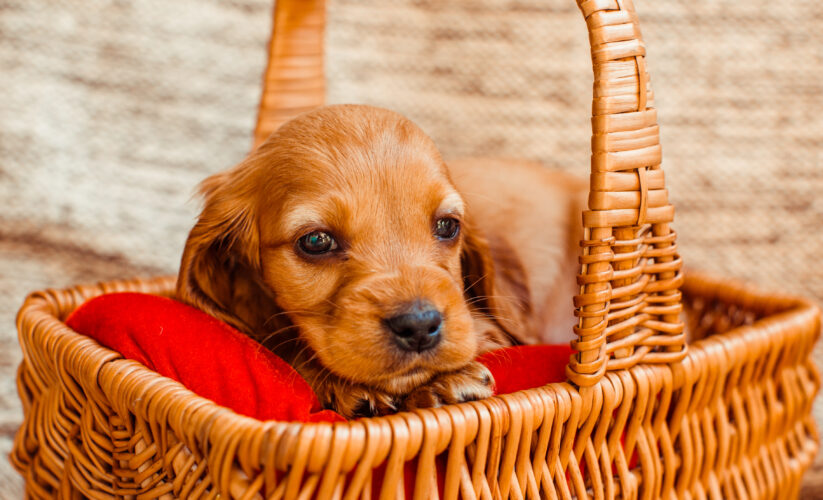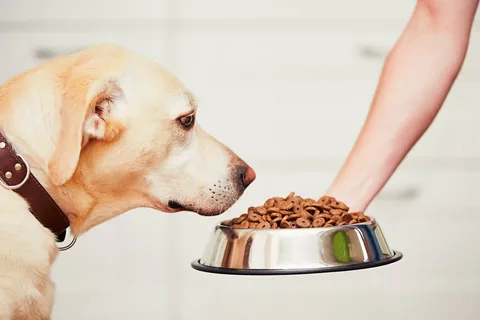
The Ultimate Guide to Crate Training Your Puppy
Ever wondered why a simple crate is key to raising a well-behaved, happy puppy? In a world full of open spaces and cozy dog beds, crate training your puppy might seem odd. But, it’s actually a way to build a strong bond with your pet, starting in a safe, cozy space. This guide will show you how crate training fits with your puppy’s natural ways.
Puppy crate training tips suggest starting early, around 8 weeks when they’re most open to new things. But what about older dogs or those who’ve never used a crate? This guide will share the big benefits of crate training, like helping with bladder control and giving your dog a safe spot. You’ll see how crate training can greatly help with your puppy’s growth, behavior, and safety.
We’ll cover everything from proper nutrition to using treats for positive reinforcement. With the right steps, your crate training step-by-step will be smooth and effective. The result? A puppy that follows house rules and has a peaceful, secure spot.
Understanding the Importance of Crate Training Your Puppy

Crate training is a top choice for trainers and vets. It meets a dog’s need for a cozy spot, reducing stress and helping with behavior. The benefits of crate training include less separation anxiety and more peace at home.
At first, some might think crate training is too strict. But knowing it helps dogs feel safe can change their view. Dogs naturally like to have a safe spot, just like a den. This helps them feel secure and calm.
This natural behavior is key in training dogs to handle stress. It’s especially useful when owners are away at work.
The benefits of crate training also include stopping bad habits when dogs are alone. It keeps them out of danger and stops chewing or scratching things. Crates teach dogs a routine, making house training easier.
They also help dogs hold their bladder until they go outside. This teaches them to go potty on schedule.
Crate training helps with separation anxiety prevention. It makes traveling safer and helps dogs adjust to new places. Dogs see their crate as a safe spot, which comforts them in new situations. Using treats and toys makes the crate a happy place for puppies.
In conclusion, crate training isn’t about punishment. It’s a key part of effective puppy training techniques. It uses a dog’s natural instincts to manage separation anxiety. With the right approach, your puppy will see their crate as a safe space. This helps with their behavior and overall health.
When To Begin Crate Training Your Puppy
Start crate training your puppy right after they come home, usually around 8 weeks old. This early start helps them get used to their new home fast. It also helps them see the crate as a safe spot, not just a place to be alone.
Keep the crate open during the day so your puppy can go in and out freely. Feeding them in the crate or giving them toys makes it a better place. This makes crate training easy and fits well with a good guide.

Don’t use the crate as a punishment. The aim is to make your puppy feel safe and calm in it. Moving a sleeping puppy to the crate helps make it a cozy spot for them to relax after play.
To help your training, make sure your puppy is tired before crating. A tired puppy will sleep better in their crate, linking it to calmness. Also, increase crate time slowly to prevent stress.
So, to crate train a puppy, it’s about starting right and being consistent and kind. This approach builds comfort and security, leading to a well-behaved dog.
The Right Crate for Comfort and Safety
Choosing the right crate is key for your puppy’s comfort and safety in crate training. There are many types, like plastic crates for their coziness and lower accident rates, and metal crates for their durability and adjustable size. For new owners, picking the right crate can seem hard, but it’s important for puppy crate training tips.

A good crate lets your puppy stand, turn, and lie down comfortably but isn’t too big. It should not be so big that they use one corner as a bathroom. This means choosing a crate that can grow with your puppy, either with a divider or by getting a bigger one later.
Many things make safety in crate training important. Keep the crate in a family area to prevent your puppy from feeling alone, which can cause problems like separation anxiety. Make sure it’s away from dangers like power cords or toxic plants and stays in a safe temperature.
When picking a crate, think about the material too. Wooden crates might look nice but aren’t good for teething puppies because they can be broken easily and are hard to clean. Coated steel wire crates are better because they last a long time, are easy to clean, and let air in, which is great for puppies that like to chew.
Choosing the right crate means thinking about what your puppy needs physically and emotionally. It should make them feel safe and comfortable. This is part of good puppy crate training tips, like getting your pet used to the crate early, putting it near family activities, and using comfy bedding.
Crate Training Your Puppy: Establishing a Positive Environment
Creating a welcoming space for your pup’s crate is key to effective puppy training techniques. Start by placing the crate where your family spends time to make your puppy feel at ease. Make introducing the crate a happy moment to strengthen your bond. Feeding your puppy in the crate makes them feel safe and links the crate to good feelings, starting with the door open and then closing it for longer times.
Using treats to connect with the crate is a key part of crate training. Giving treats with specific words can make your puppy want to go into the crate by 60%. It’s important to balance how long your puppy spends in the crate. Positive reinforcement can make them eager to go in by over 70%. But, don’t keep them in there too long to make sure they get enough exercise and playtime.
To make the crate a positive place, watch for signs like whining, which could mean separation anxiety. Proper crate training can cut this down by up to 95%. Creating a daily routine helps with crate training in about 90% of puppies. Crate training needs to fit your puppy’s personality, so watch and adjust over the 3 to 9 week period to make it work best for them.





